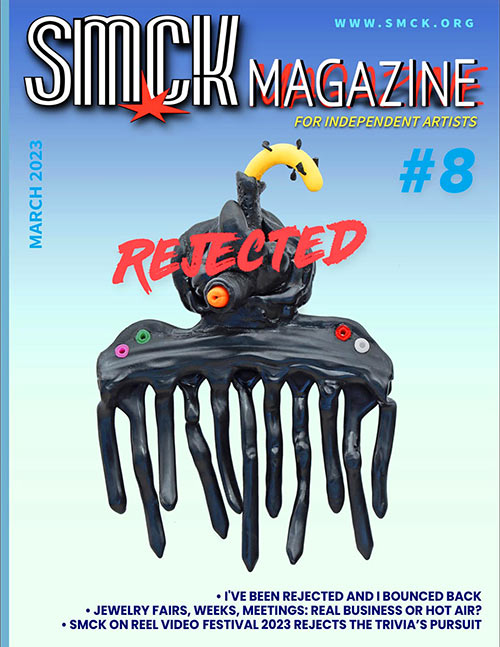REJECTED & APPROVED
REJECTION FORCES US TO QUESTION WHAT OUR MISSION IN LIFE IS.
By Loukia Richards, Rachael Colley, Kristina Austi, Christof Lungwitz, Arpad Pulai
 "Bark", 2020. Tapestry by Kristina Austi (detail).
"Bark", 2020. Tapestry by Kristina Austi (detail).
LOUKIA RICHARDS
The very word 'rejection' spreads dread through the art world. Rejection looms over every step an artist takes on their journey; every application for exposure, funding, or support sows the seed of potential rejection. Every inch forward toward fame is paved with tears and – not rarely – self-doubt about one's merit and talent. In difficult times, rejection translates to a lack of assignments and can lead to poverty and depression.
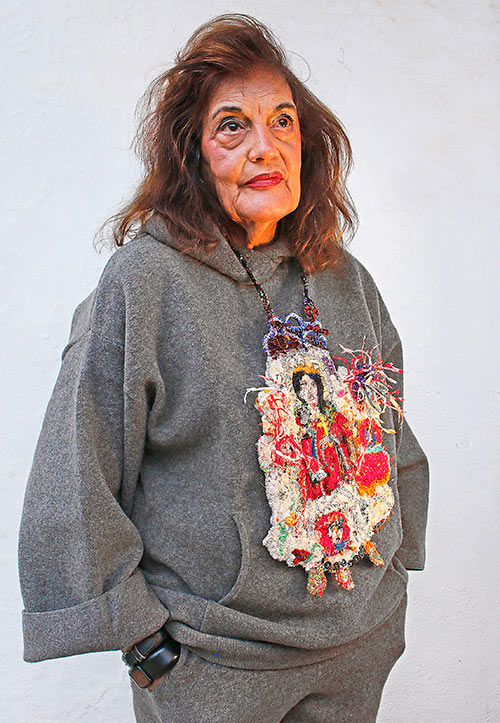
"St.Barbara", 2020. Pectoral by Loukia Richards. Textile, embroidery, silver, paper, acrylic. Model: Christina Panagiotopoulou. Photo: Chr. Ziegler.
"The people who get on in this world are they who get up and look for the circumstances they want, and if they can't find them, make them." George Bernard Shaw's often-cited quote suggests that being unsuccessful in gaining recognition may trigger the determination to walk a road less traveled – and probably more alluring. Rejection forces us to reflect on our true potential and question what our mission in life really is.
The art market is flush with artists who did all "the right things." They graduated from esteemed academies, received prestigious awards, held shows at respected institutions, yet all they've managed to do is break their noses bumping up against a glass ceiling. This invisible barrier has nothing to do with gender, ethnic or social background; it is the moral boundary between egotism and empathy, that we artists need to cross in order to grow as human beings. These new values will, in turn, have an impact on our aesthetics, priorities, interaction, and finances.
KRISTINA AUSTI
I must admit, I am so used to being rejected (even if it does not look like this to my colleagues, as they say) that I don't want to waste my time critiquing organizers. Gradually, you harden your skin. Ultimately, it is not for jurors; I do my work because something else drives me. I want to explore, test, and try to express something that has to come out.
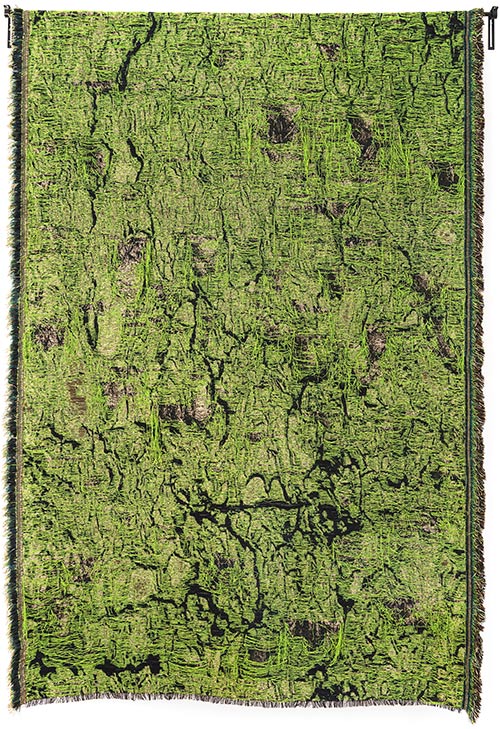
"Bark", 2020. Tapestry by Kristina Austi. Wool, viscose, polyester. Photo: Simen Ulstein.
I agree with Bernard Shaw's saying, and I enjoy the freedom of not being so successful: I can experiment more. At the same time, I feel that the time I feel upset after each rejection gets shorter with age. As if I get this calm knowledge that this is right no matter what everyone else says. But I can also admit that I have had sad thoughts, especially at the beginning of my career.
Creating artwork is very much about self-disclosure – meaning that you, as an artist, are very vulnerable. And then the opinion of the jurors becomes important. Not to mention that you don't get the exposure and possibility to meet the viewer, which means you can never "tell your story;" ultimately, you get a feeling of being worth less. Many institutions and exhibition organizers should put some effort into explaining this in their rejection letters (considering this vulnerability).
RACHAEL COLLEY
As an artist, the disappointment that comes with rejection occurs regularly, with unpleasant events often concealed or brushed over. Supporting each other and sharing our experiences helps gain perspective and build resilience over time, through persistence and in developing a tenacious approach.
 "Sha-green",2019. Bracelet by Rachael Colley.
"Sha-green",2019. Bracelet by Rachael Colley.
ARPAD PULAI
By chance, after the exhibition in Mons, the work was accepted for exhibition at the furniture fair in Milan, Salone de mobile 2022. So I felt somehow compensated for that failure of being passed up by the second competition.
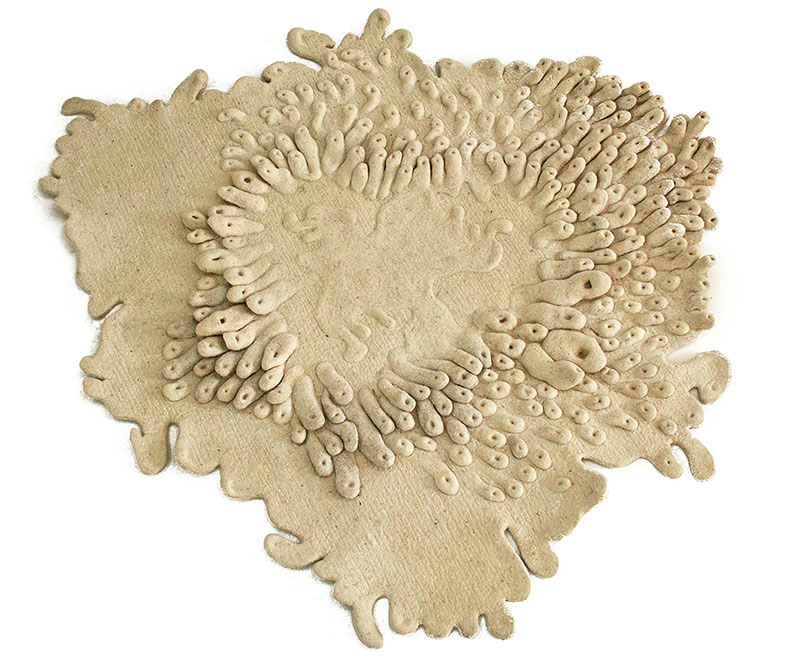 Textile Garden", Biocarpet by Arpad Pulai. Wool felting technique. Photo: A. Pulai.
Textile Garden", Biocarpet by Arpad Pulai. Wool felting technique. Photo: A. Pulai.
CHRISTOPH LUNGWITZ
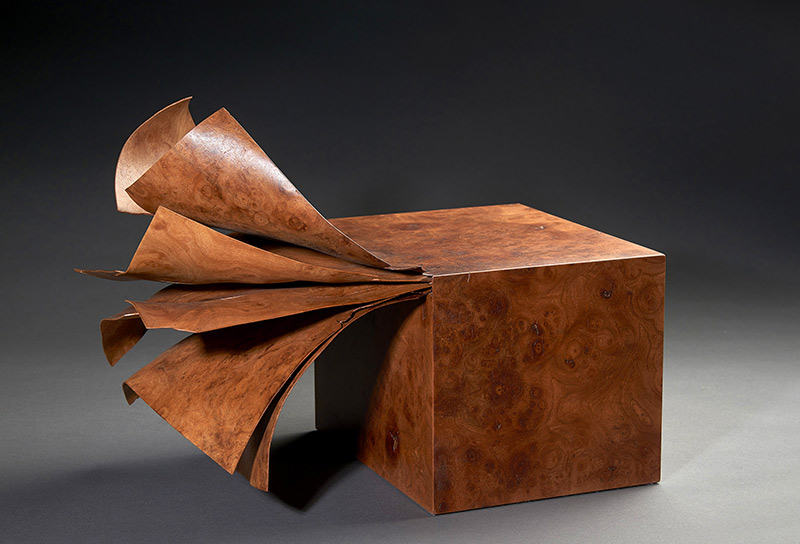 "Kubus und Flächen", object by Christof Lungwitz. Elm veneer formed and glued to a cube. Photo: Brigitte Lerho.
"Kubus und Flächen", object by Christof Lungwitz. Elm veneer formed and glued to a cube. Photo: Brigitte Lerho.
LINKS:
Loukia_Richards |
Kristina_Austi |
Christof_Lungwitz |
Racheal_Colley |
Arpad_Pulai









